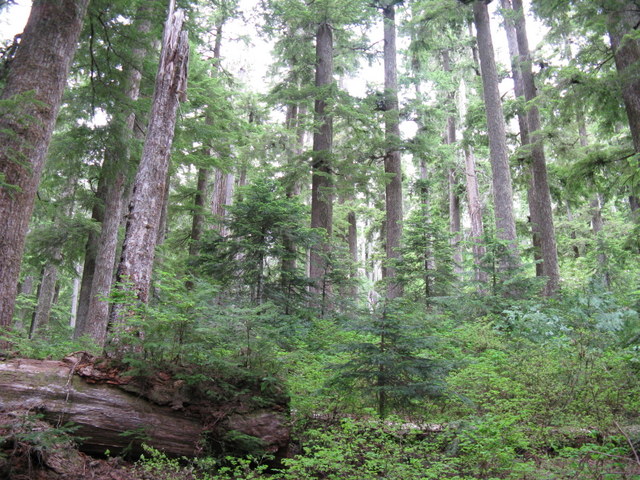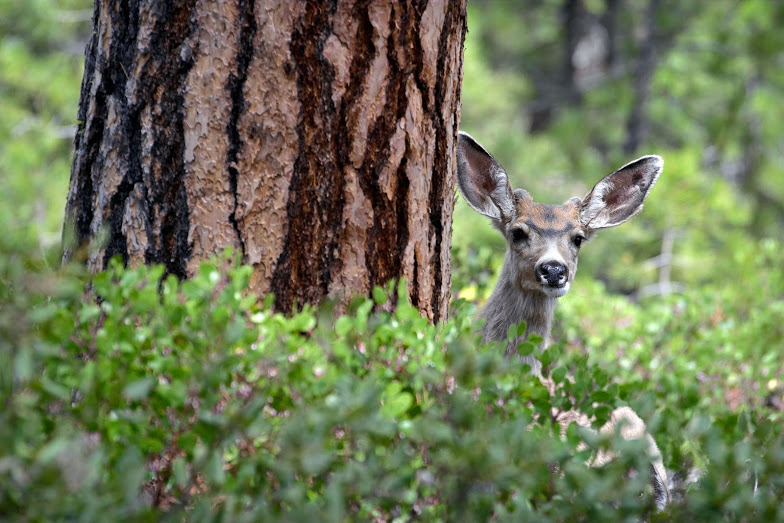
There are many types of old-growth forests in Oregon, but generally speaking, old growth means a forest that has not undergone any major unnatural changes (such as logging) for more than 100 to 150 years, contains a diversity of tree species and structures, and provides a home for a diversity of wildlife species. Natural disturbances like fire or disease often leave patches of dead snags or down trees in these forests, as well as diverse young vegetation growth.
Old-growth forests in Oregon can be ancient, such as the 600 to 1000-year-old cedar groves in the Big Bottom area of the Clackamas River. They can also be younger, such as the 100 to 150 year old stands found in parts of the Willamette National Forest. In the wet, western part of the state, old-growth Douglas-firs can be giants, 10 feet thick and hundreds of feet tall. In dry Eastern and Southern Oregon, an old-growth ponderosa pine may only be 18 inches thick, while 200-year-old juniper trees can stand only 20 feet tall.

The most important feature of an old-growth forest is its resilience. Old-growth stands that still contain all or most of the species of wildlife, fish and plants that are native to them are undergoing constant change. Natural events such as fire or windstorms can alter these forests, but they often recover quickly. However, it can take centuries for old-growth forests to recover from destructive human activities such as clear-cut logging.
Old-growth forests once covered much of Oregon, but today less than 10 percent of our state’s heritage forests remain. Much of what survives is found on US Forest Service and Bureau of Land Management lands that are still actively targeted for logging.
- You can read more about Oregon's old-growth forests in the Pacific Northwest Research Station's old-growth fact sheet.
- Learn more about our book "Oregon's Ancient Forests: A Hiking Guide"

